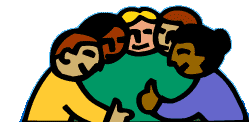 |
Hello. My name is Bev Jaremko and I am currently a teacher in public schools in Calgary, Canada. I have been teaching children for 30 years now, both in public systems and home-schooling, in preparing lessons for preschoolers and in designing courses for students from ages zero to 16.
I started teaching in 1970 but it was in 1975 that I made a discovery that I want to share with you - it is how to teach a very young child to read. I graduated from university with a degree in languages - French and German and that is what I was teaching when I became pregnant with my first child. As I watched my son at age two it occurred to me that it might be fun if I introduced him to a few reading skills before school. From my interest in languages I was used to breaking down a language system into small logical parts and maybe that is why I took special interest in how he learned to talk.
When I watched him closely I saw that even at age 2 and 3 he, like all little kids, had an uncanny ability to process words. My challenge was to figure out how he was thinking and to present to him English sounds and the English alphabet in ways that matched his view of the world.
I figured that he was smart (all kids are smart) and if I broke down the alphabet into easy-to-manage segments, I could teach him the letters simply as 26 new toys. |  |
Some think I taught him to read. In fact he taught me how to teach him. I showed him one letter every week or so and for that letter I super-simplified the task. We studied only its lower case form, not upper case (since most books are written in lower case anyway). We did not bother with the name of the letter since it is confusing, but we went straight to the sound it makes. H was huh, b was buh, s was suh. In that way he only had to learn one association with its shape not two.
We felt the letter made of playdough, made of cheese, made of wet noodles, made of cardboard, sponge, vinyl. I showed him that one letter as a magnet, made of wood, in alphabet soup - but I did not show him any other letters. We only studied the one thing.
And I had the inspiration to enter his world and to explain why the letter had its shape and why it made its sound.
This took some inventing but I realized his mind was logical and he would remember the shape and sound only if there was a story attached. So for c (we called it curl or cuh) I said it was a curl of hair and he recognized its shape. It was then easy to call it 'curl' or 'cuh'. Wuh was waves on the water and if he called it 'waves' not 'wuh' I knew he knew what we were talking about.
Suh was snake, tuh was traintracks.
We only learned one letter every few days and we only studied it for 5 or 10 minutes. Then we played at other things but as we went for walks I led him to notice only that letter in signs we happened to be passing. We felt it when it stuck out on embossed signs, his little fingers going round and round the o, or snaking down the s.
So the alphabet for him became tactile and edible and in many colors. I showed him each letter in many sizes and made out of many materials so that he could tell the ONLY thing that made it what it was was its shape.
And as I taught him I helped him memorize a little poem of the letters learned so far. The poem brought in then the auditory with the visual, music and rhythm with reading. I tried to link up all 5 senses to help him recall those letters and the logic of the stories rounded it all out. |  |

